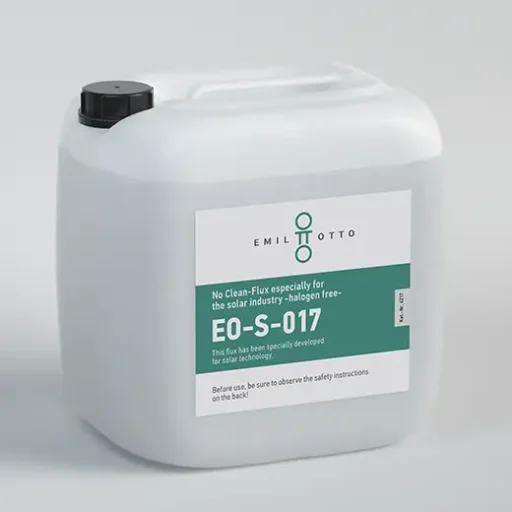No Clean-Flux especially for the solar industry
Carboxylic and di-carboxylic acid complex, halide-free, resin/rosin additive (WEEE/RoHS compliant)
Type ISO-9454: 2231 (2.1.3.A) // DIN-EN 61190-1-1 (J-STD-004B) (IEC ORL0)

| Appearance/smell: | colourless, light yellowish, transparent liquid |
| Solids content: | 2.0 wt.-% |
| Density at 20 °C: | 0.82 – 0.88 g/ml |
| Acid number: | 18 – 21 mg KOH/g |
| Activators: | carboxylic and di-carboxylic acid complex, halide-free, with special resin/rosin additive |
| Solvents: | short-chain alcohols: 75% / DI-Water |
| Flash point: | 12 °C |
| VOC: | 75 % |
This No Clean-Flux was specially developed for the solar industry, in particular for soldering solar modules, tabber and stringer material as well as for connecting cells. EO-S-017 is formulated halide-free and leaves no sticky residue.
The activators are specially designed for the production of solar modules. The solids content is 2%.
Recommendation from practice:
In general, flux should be applied in a minimal quantity.